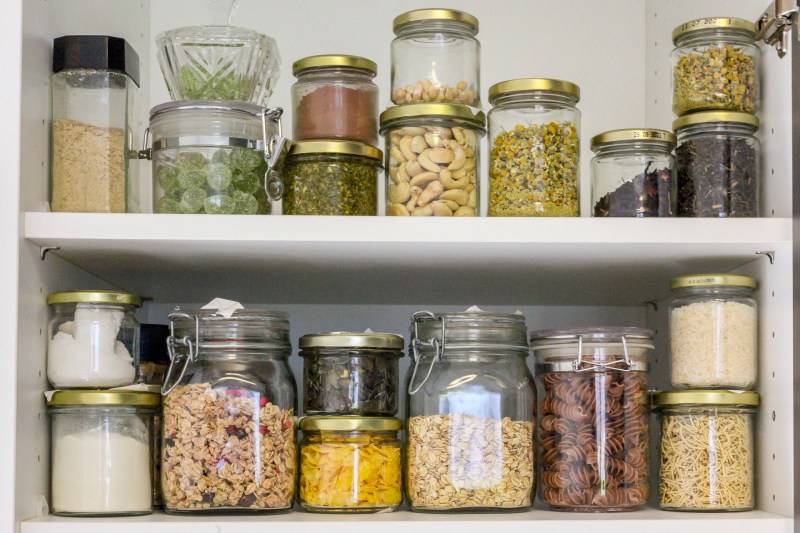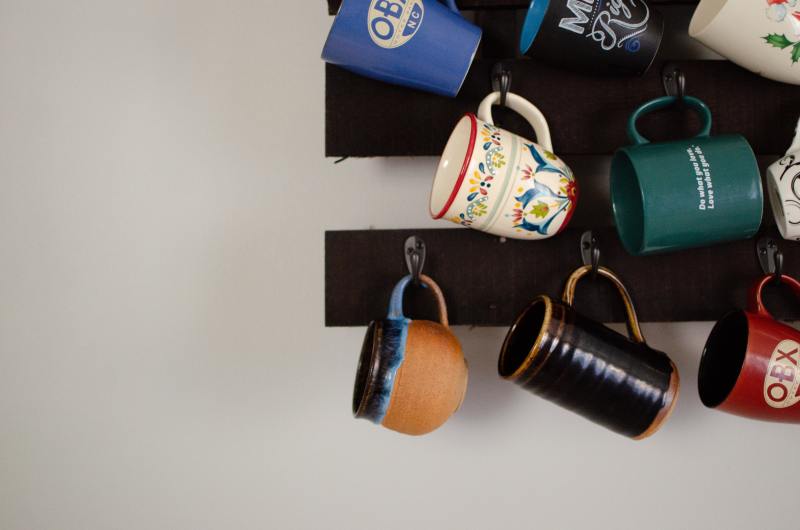Maintaining an organized kitchen can sometimes feel like a full-time job. After a long day, the last thing you want to do is come home and go on a wild goose chase for that missing bag of quinoa or mysterious Tupperware lid buried deep in one of your cupboards. Maintaining organized cupboards might require a little extra attention at first, but once you have a routine down, you'll feel like a whole new person.
It's never too late to develop new habits. With the right tools, you can easily transform your cupboards into a peaceful and chaos-free space in your kitchen.

Make Good Use of the Hard-to-Reach Cabinet Space
One of the biggest mistakes you can make when organizing your cupboards is misusing the hard-to-reach cabinet space. Unless you’re on the taller side, you probably shouldn’t store important items in those upper cabinets. You might think you’ll have the energy to drag out the step stool on a regular basis, but let's be realistic. Follow these steps to make your life easier.
Step 1: Empty out your cupboards
Step 2: Make a list of special occasion items
Step 3: Get rid of bulky packaging and transfer items to clear containers for easy visibility
Step 4: Use that upper cabinet space to store special occasion items like bottles of wine, fancy plates, or appliances you only use once in a while
Step 5: Keep a step stool within reach
Maximize the Deep Cabinets
While it’s easy to keep an 'out of sight, out of mind' mentality with your cupboards, there’s nothing more frustrating than an avalanche of spices tumbling down on you when you reach for a water glass. Grouping like items together may seem like a simple concept, but it will help you to get into a routine. Here's how to make the most of your cabinet real estate.
Step 1: Set aside bigger items for deep drawers
Step 2: Group bigger appliances by material such as wood, plastic, metal, etc.
Step 3: Use tall dividers to create a horizontal division in those deep cabinets or stackable cabinet organizers to maximize the vertical space
Step 4: Place smaller items toward the front so you can see what else is in back.

Use Cabinet Doors for Storage
Cabinet doors often get overlooked as valuable storage space. When it comes to small items like spices or seasonings, you can buy cabinet door spice clips to make your life easier. It can be frustrating when you just want a bottle of vanilla extract, but you have to knock over 12 spices to get to it. Here's how to take advantage of your cabinet doors.
Step 1: Separate all of your spices into categories
Step 2: Attach spice clips to an eye-level cabinet door or wall
Step 3: Organize spices either alphabetically, by cuisine, sweet vs. savory, or anything in between
Step 4: Clip spices into cabinet door clips and easily access what you need while you're cooking
Repackage Dry Goods
It's time to toss out all of that bulky packaging on your favorite cereals or pasta and get organized. With clear containers for your dry goods, you'll be able to see everything more clearly before the ingredients go bad. This also prevents a huge mess from unsealed packaging.
Step 1: Identify the bulkiest food items in your cabinets
Step 2: Buy clear plastic or glass containers that will fit bulk pantry items
Step 3: Throw out bulky packaging on ingredients
Step 4: Switch to clear plastic containers that will streamline your cupboard space
Step 5: Label each container clearly before storing
Organize Mugs With Shelf Hooks
Instead of having your mugs crammed together in the cabinet, hang them up so you can easily grab your favorite mug for that morning cup of coffee or tea.
Step 1: Pick a cabinet door or wall with open space
Step 2: Pick your favorite mugs to display
Step 3: Attach hooks securely
Step 4: Hang mugs where you can easily access them
Organizing your kitchen cupboards can be overwhelming, so take it one step at a time. Whether you decide to follow all of these steps or just one, you're on your way to having a less cluttered kitchen. The more organized you are in the kitchen, the easier it'll be to cook or even just enjoy a cocktail, knowing your messy cupboard days are behind you.
Editors' Recommendations
- How to start your own home bar: the essential spirits
- How to get rid of ants in the kitchen: Tips and tricks you need to know
- How to Organize Pots and Pans in 5 Easy Steps
- How to Cook With International Blends, Pastes, and Rubs
- You Won’t Believe these 5 Ways To Clean Burnt Pots and Pans




